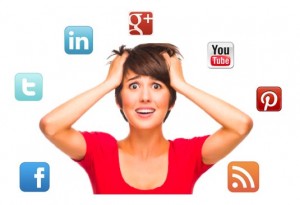Today’s United States Navy is made of a network of innovative concepts and cutting edge technology, that when combined through land, air, and sea, results in immense power and war winning capabilities. They are continually upgrading to have the fastest and best ships, weapons, and jets. Recently, the Navy acquired the new Lockheed Martin F-35 Lightning II jet, which will slowly replace the FA 18 Super Hornet. The first flight of the first jet produced was in February 2011, and as of December 2013, 100 jets have successfully been produced. According to the Lockheed Martin Corporation, the F-35, designed with a 360 degree window, enables pilots to be anywhere from six to eight times more effective on the battlefield and the communication system allows the pilots to safely communicate on a secure network back to base.
There are many interesting functions and capabilities this particular jet has, but what caught my attention the most right from the start was the fact that it has the ability to go supersonic, meaning it can fly faster than the speed of sound. The idea of traveling faster than sound blows my mind; how is that possible?
I came across an article from Fox News published on April 11, 2014 with the headline “Los Angeles ‘quake’ really a Navy jet breaking sound barrier.” In this article, I learned that people in Los Angeles reported having felt the ground move yet what they felt was really the vibrations of a loud “boom” that came from the air. The rumbling the people in Los Angeles felt was produced when a FA 18 Super Hornet broke the sound barrier approximately 35 miles away from San Diego over the Pacific Ocean. U.S. Navy Commander Kevin Stephens quotes in the article, “the sound will propagate in the direction it’s flying,” which caused buildings in L.A. to shake as a result of the plane headed north bound.
Merriam Webster defines a sound barrier as “a sudden large increase in aerodynamic drag that occurs as the speed of an aircraft approaches the speed of sound.” When a plane breaks through this barrier (traveling over 770 miles per hour), the sound waves combine together in front of the plane, and the plane accelerates through this force field, creating a loud boom, otherwise known as a sonic boom, from the change in pressure. This is similar to a large wake created behind a boat when it speeds up.
I really wanted to find out what it took, what kind of engine had to be designed in order to power the plane fast enough to break through a barrier, but had difficulty finding enough information on this subject because it is classified. After considering this phenomenon for some time however, it got me thinking about other various barriers, specifically light barriers. Is it possible to create a shock wave of light by breaking a light barrier similar to supersonic airplanes breaking a sound barrier?
According to Dr. Christopher S. Baird, who answers science questions with surprising answers, planes are capable of breaking the sound barrier because sound is simply a “traveling vibration of air molecules.” Sound waves pile up into pressure that only strong airplanes can break, creating a shock wave/sonic boom. However, “nothing can travel faster than the speed of light in vacuum,” so neither a plane or space ship would ever be fast enough to break through the light barrier due to physics; a never ending supply of energy would be needed to create an optical shock. If not in vacuum, the speed of light moves more slowly through other objects with more dense materials and certain objects can break the light barrier if traveling very fast, which creates a shock wave known as a Cherenkov radiation. An example of this is high-energy electrons that travel through water that are released from a nuclear reaction; as they travel through the cool water faster than light, it creates a shock wave of light seen as a blue-ish color to the human eye. It is also possible, but less likely, for objects to break through the light barrier in air but very very high speeds are required. One example of this is when high speed particles are released from Supernovae into the atmosphere as cosmic rays and are sometimes fast enough to create optical shock waves. So overall, I found it is possible to break a light barrier, just as it is possible for planes to break a sound barrier.
Watch the first minute of this video of jets breaking the sound barrier.

Sources:
http://sciencequestionswithchris.wordpress.com/2013/04/09/can-you-make-a-shock-wave-of-lightby-breaking-the-light-barrier-just-like-supersonic-airplanes-break-the-sound-barrier/
http://www.merriam-webster.com/dictionary/sound%20barrier
http://science.howstuffworks.com/question73.htm
http://www.foxnews.com/us/2014/04/11/los-angeles-quake-really-navy-jet-breaking-sound-barrier/
https://www.f35.com/about























